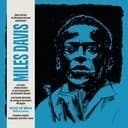D Dorian follows the interval formula W-H-W-W-W-H-W, producing the notes D-E-F-G-A-B-C-D. The defining characteristic is the natural sixth degree (B) which distinguishes it from D Aeolian (Natural Minor) that contains B♭. This single note alteration creates a dramatically brighter, more hopeful sound while preserving minor tonality. The scale contains the intervals: root, major 2nd, minor 3rd, perfect 4th, perfect 5th, major 6th, and minor 7th. This interval structure has made D Dorian the default "Dorian sound" that musicians reference when discussing modal harmony—when jazz players say "play Dorian," they often mean this exact scale.
Relationship to C Major and Modal Context
As the second mode of C Major, D Dorian shares the exact same notes (no sharps or flats) but emphasizes D as the tonal center. This makes D Dorian extraordinarily accessible—it uses only the white keys on piano, simplifying learning and visualization. This relationship to C Major allows musicians to think "C Major from D to D," making it arguably the easiest mode to understand conceptually. Compared to darker modes like D Phrygian or the more dramatic D Harmonic Minor, D Dorian occupies a balanced, versatile middle ground. Its popularity has influenced countless musicians to explore related modes and other Dorian keys like G Dorian and A Dorian.
Practical Applications and Historical Significance
D Dorian achieved legendary status through Miles Davis's "So What" (1959), which established the sound of modal jazz and influenced generations of musicians. The composition's Dm7-Em7 progression over 32 bars demonstrated how a single mode could sustain musical interest without traditional harmonic movement. Beyond jazz, D Dorian appears in funk classics (Herbie Hancock's "Maiden Voyage"), rock anthems (Santana's exploratory solos), and Celtic traditional music (where Dorian modes create the characteristic "ancient" sound). Contemporary producers use D Dorian for hip-hop and electronic music tracks, appreciating its sophisticated minor vibe. The characteristic i-IV progression (Dm-G) has become synonymous with the Dorian sound, appearing in countless compositions across genres.
Characteristic Sound Qualities and Musical Expression
D Dorian produces the quintessential "bright minor" or "jazzy minor" quality—melancholic yet hopeful, introspective yet sophisticated. The major sixth interval (D to B) creates openness and prevents the heaviness of natural minor, while the minor third (D to F) maintains emotional authenticity and depth. This unique combination has made D Dorian the reference point for the entire Dorian sound—when musicians describe something as "Dorian-flavored," they typically reference this specific tonal quality. Jazz educators describe it as "cool" and "modern," while funk musicians appreciate its groove-friendly character. The absence of a leading tone (major 7th) gives D Dorian a floating, non-resolving quality perfect for extended modal vamps and meditative compositions.
Learning Tips and Practice Strategies
Begin by learning "So What" by Miles Davis—this single composition will teach you more about D Dorian than hours of scale practice. Compare D Dorian directly with D Natural Minor, playing both back-to-back while focusing on how the raised sixth (B vs B♭) transforms the sound. Practice the iconic i-IV progression (Dm7-G7) while improvising D Dorian patterns—this two-chord vamp is fundamental to understanding the mode's character. Since D Dorian uses only white keys, it's perfect for initial mode exploration before tackling other Dorian keys like E Dorian or F# Dorian. Emphasize the sixth degree (B) in your melodies to highlight the Dorian character—this note is what makes the mode sound "Dorian" rather than just minor. Record yourself playing over a Dm7 drone and experiment with different melodic approaches to internalize the sound.

